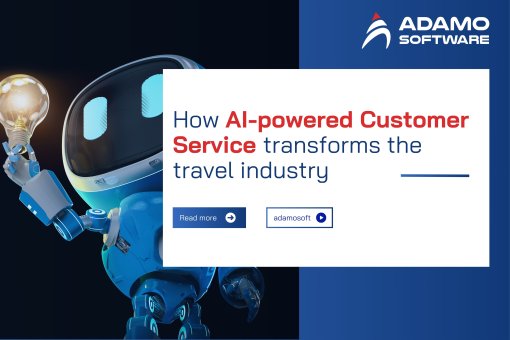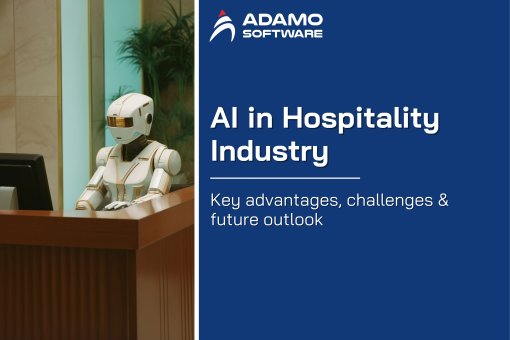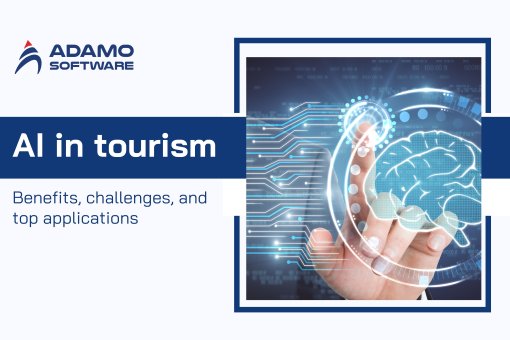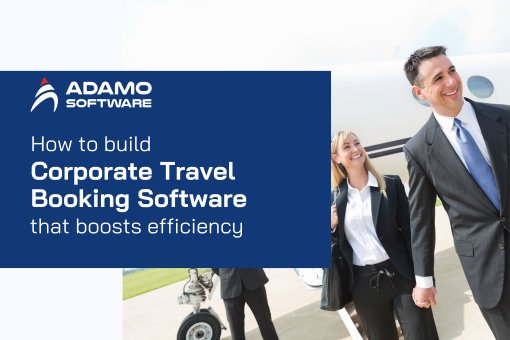Hotel revenue management software: From A-to-Z guide
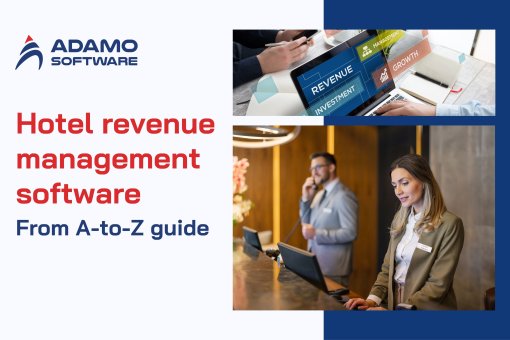
In the line of business such as hospitality, change is gradual. Therefore, to overcome change, it’s important to embrace change. Hotel revenue management software is one of the most significant weapons for hotel operators. This technology increases profits from proper cost and pricing, inventory, and demand control. It allows hotels to make much-needed decisions from data that can help them optimize their profitability.
Welcome to the guide to hotel revenue management software. Here, we’ll walk you through the basic concepts and practices. Whether you’re new to the term or just interested in learning more about it. This all-inclusive article will guide you on why it is valued. You will also discover how it is different from the yield management tools and the kinds available in the market. By the same end, you will understand why it is important to work with the right partner. Hence our Adamo Software for developing custom solutions for your hotel.
I. What is hotel revenue management software?

Hotel revenue management software is developed to specifically address the needs of the hotel industry regarding revenue optimization as pertains to replacement data. It involves information on room occupation, prices, customers, and market environment. With this information, hotels get to make better decisions about where and when to price and put out the hotel stocks.
Hotel revenue management software is principally designed to identify the correct room for a certain client at an appropriate price at the right time. This is done using a sophisticated method. It can be the algorithms for demand forecasting and the determination of price strategies. In contrast to manual methods, the software offers calculations and recommended actions, which are the most optimal ones, require less time and do not involve human mistakes.
This software is particularly beneficial in the current cutthroat hospitality environment. It guarantees that hotels can flexibly modify their course of action when necessary, provided by shifts in demand, market, and customers. When it comes to hotel revenue management software, hotel stakeholders get more effective, more profitable, and more competitive.
Also read: Hotel revenue management software market: Challenges & upcoming trends
II. Yield management & Revenue management software for hotels: Key differences
Yield management and revenue management are two concepts related to each other. However, they have their differences according to the conceptual definitions and in their practices of application in the hospitality industry. Both strive to achieve the maximum income for a hotel but in different manners. Outsourcing or choosing the right tools for revenue management relies on the differentiation between niche revenue management and the broader approach to the hotel business.
1. Focus Areas
Yield management primarily concentrates on the right pricing of rooms and their occupancy level. It requires a price change to maximize the total revenue from all the available space. Whereas revenue management goes beyond focusing on room prices. It aims to achieve the maximum overall hotel revenue by including food services, spa services, and events. Both strategies are supported by hotel revenue management software, but the software offers greater scope when questioning an organization’s general profitability.
2. Scope and Approach
Yield management can be restricted to controlling the inventory and suitable rates and guaranteeing that the correct room is sold to the correct guest at the optimal price. Revenue management is far more tactful, and a lot more comprehensive in its scope. It assesses demand, guest activity, and market factors to optimize income sources across a host of hotel operations. Revenue management systems incorporate these elements as they are implemented in hotels to provide the appropriate tools for analysis.
3. Automation and Efficiency
Historically, yield management involves the manual modification of prices and the implementation of specified pricing approaches that take time to implement and can be inaccurate.
Traditional hotel systems are prone to human input. The majority of activities can be attributed to human effort. The modern-day RMS employs significant levels of automation. This automation is used for pricing, predicting demand ability, and performance measurement. These automations make activities faster. The predictions and decisions made are accurate.
4. Use of Data
Yield management relies on limited information and only involves room stock capacity and deprivation of demand.
As with hotel revenue management, the financial function of RM gathers numerous types of information and is bolstered by sophisticated HM RM tools. Such aspects as customers’ behavior, booking preference, competition dominance, and even outside-world factors like festivals/ holidays.
5. Adaptability
Yield management is most appropriate when inventory capacity is fixed and guest demand is relatively constant, normally during high season or festivals. That is why revenue management is more flexible with hotel revenue management software. They can also adapt to market events and surprising spikes in demand. This allows hotels to remain relevant throughout the year.
In a nutshell, yield management is a specific approach to realizing the greatest revenues by varying prices. Whereas revenue management acts more fully in terms of achieving overall incomes. By implementing hotel revenue management software, hoteliers can align the attributes of PR and DR while automating and effectively managing the processes involved. Therefore, they make better decisions. It increases efficiency and revenue in all operations related to the hotels.
III. Main types of hotel revenue management software
The hospitality industry provides multiple choices of hotel revenue management software based on the specific needs of each hotel. They aid in increasing efficiency, drive business strategy for the best prices, and enhance organization profits. Business requirements, in terms of size and clientele as well as unique needs or demand, determine the kind of software that has to be selected for the specific hotel. In the following subtopic, we look at the various hotel revenue management software and how they operate.
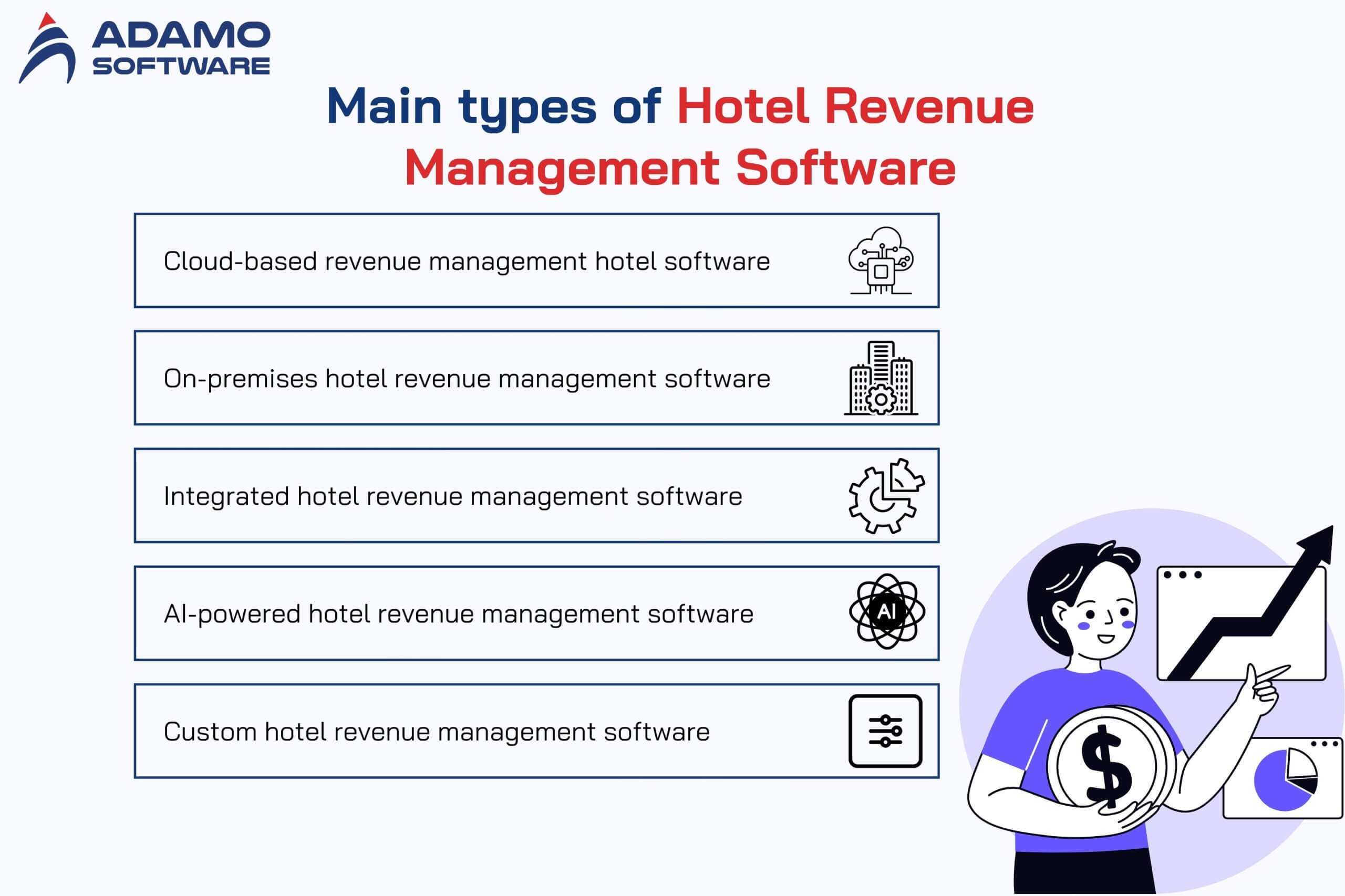
1. Cloud-Based Revenue Management Hotel Software
This is because solutions hosted online can be accessed anywhere connected to the World Wide Web. It is a type of hotel revenue management software that stores information on a secure server and enables the hotelier to make live decisions. This system is best for hotels with several branches as the data is controlled and can be updated immediately. Therefore cloud-based tools are flexible and suitable for small hotels and large chains.
2. On-Premises Hotel Revenue Management Software
On-premises software is run from the hotel’s servers. It is bought by organizations that need strong control of their data and information. This type of hotel revenue management software puts the onus of data in the hands of the hoteliers. However, it comes with additional costs on hardware and maintenance. It is most useful when the Internet connection is slow, or the hotel has a high-security standard.
3. Integrated Hotel Revenue Management Software
Integrated systems include solutions for revenue management with other hotel operational and management tools. The tools include the property management systems (PMS) and customer relation management (CRM) systems. This type of hotel revenue management software makes a single point where all information is gathered, and all processes are streamlined.
4. AI-Powered Hotel Revenue Management Software
Machine learning techniques that form the foundation of AI solutions operate on principles of probability to make correct predictions. This kind of hotel revenue management software enables hotels to become ahead of their competitors and use modern technologies. Pricing can be tweaked, demand predicted, and trends highlighted without human intervention. They are far more effective and accurate than conventional methods.
5. Custom Hotel Revenue Management Software
The implementations in this case are unique and are developed to suit the overall needs of that particular hotel or chain of hotels. This type of hotel revenue management software is built specifically for the site, and its specific problems, to interface with other systems, and to feature special capabilities. Custom software is suitable for companies that want a unique product made to meet the specific needs and objectives of the hotel organization.
This paper discusses the primary categories of hotel revenue management software. This allows hotel managers to make the right decision regarding the acquisition of this tool. Cloud-based solutions are versatile while on-premises ones are rigid, and integrated solutions guarantee the smooth running of businesses. Solutions involve deep processing by AI and, if necessary, the development of bespoke software tools with specific functionality integrated. Thus, by choosing the right type, hotels can get the most out of their revenues and become rather successful in the long run.
IV. Must-have features of revenue management software for hotels
Selection of the right hotel revenue management software is essential more so for effectiveness Contrary to ineffectiveness and low profitability. Indeed, the best software offers particular characteristics that make decision-making easier. They can assist hoteliers in making the most of their revenues. Below, we will look at the features that should never be missed in any good hotel revenue management software.
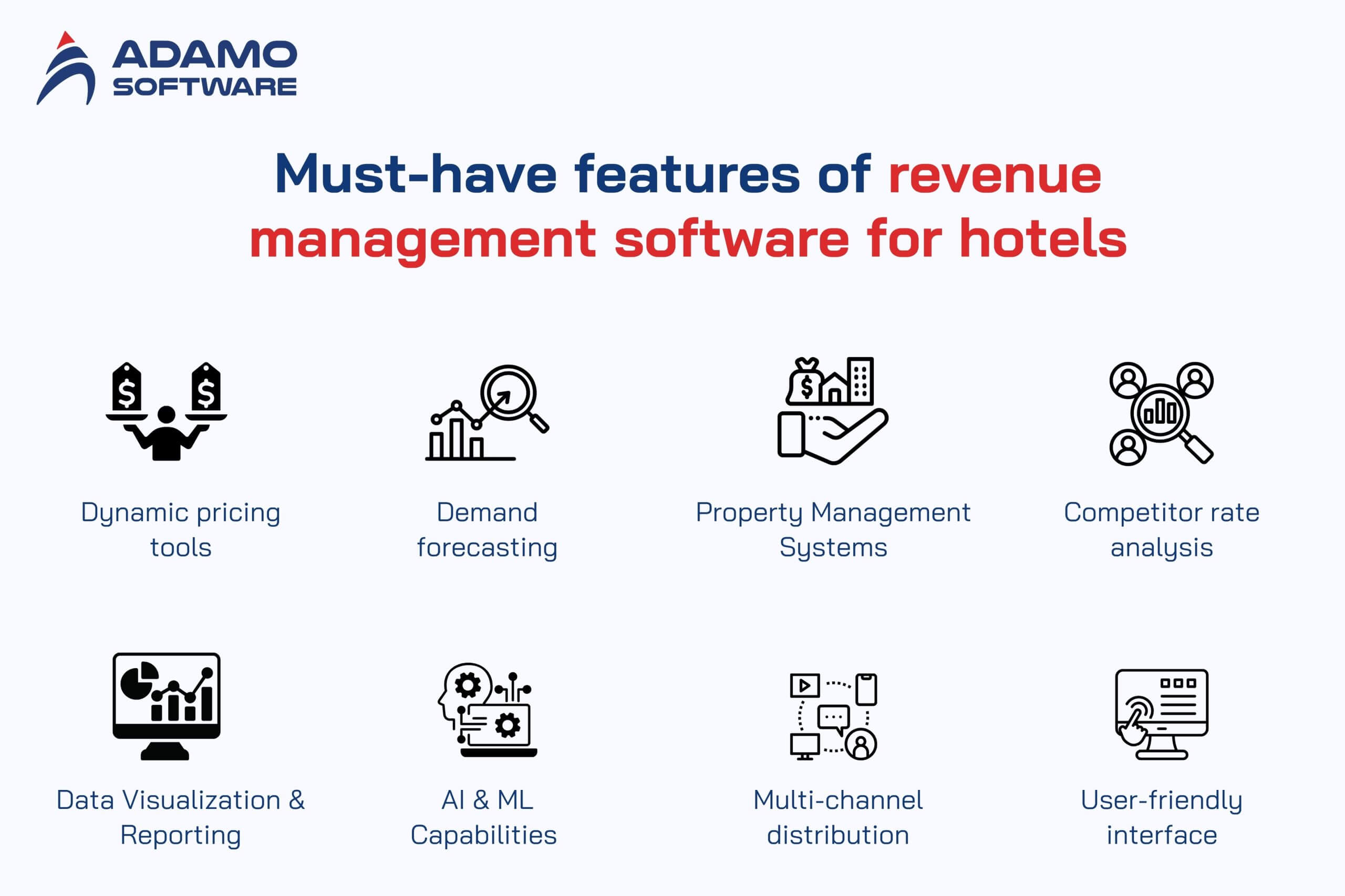
1. Dynamic Pricing Tools
The use of dynamic pricing is quite necessary for changing rate setbacks to encompass different demands and periods in the year. A good hotel revenue management software employs real-time data to either suggest or implement a change in price. This helps hotels to keep pace with the market while making good returns, especially during peak years and vice versa during lean years.
2. Demand Forecasting
Demand forecasting enables hotels to determine future occupancy due to high accuracy. Hotel revenue management software predicts demand patterns with the help of superior algorithms and historical data analysis. It makes pricing and inventory decisions thus proving helpful. It is useful for removing overbooking and under booking problems in the hotel’s schedule.
3. Property Management Systems (PMS)
One of the crucial functions is that any hotel revenue management software should be compatible with the existing property management systems. This integration enables real-time sharing of information. For instance, real-time data reports on rooms, bookings, cancellations, and other information so that all are connected and function well.
4. Competitor Rate Analysis
As an implication, so as not to leave much room for the set prices to be overshadowed by competitors’ prices. Hotels must employ pricing policies that will enable them to track down the competitor’s prices. Hotel revenue management software includes competitor rate analysis features. This offers information on competitors’ rates, offers, and market segments. This also assists hotel industry stakeholders in making the right pricing decisions to increase customer traffic.
5. Data Visualization and Reporting
AASB’s tools are used as a chart and graphs representing complex data in simpler ways. Choosing hotel revenue management software must include easy customization of dashboards. It should also have different revenue reports, booking patterns, and customer preferences. These and other findings are useful for understanding prospects for development and areas of concern for hotel businesses.
6. AI and Machine Learning Capabilities
Artificial intelligence in features makes hotel revenue management software efficient as they use datasheets and patterns in their operations. Machine learning algorithms are used constantly to optimize the forecasts, pricing suggestions, and demand the hotel needs to better accommodate the market shifts.
7. Multi-Channel Distribution
The hotel revenue management software recommendations presented above should allow for multiple distribution channels to fill the room inventory. It enables rate control and inventory in direct channels and OTAs, GDSs, and other distribution channels.
8. User-Friendly Interface
The software should be simple to use. Effective hotel revenue management software is easy to use and provides straightforward features for the end user.
Several functionalities must be built into the right hotel revenue management solution. They are dynamic pricing, demand forecasting, competition analysis, and integration with hotel PMS. Its features such as artificial intelligence, multiple distribution channels, and an easy-to-use interface add more value. These are must-have features of the hotel revenue management software. Hoteliers should consider these features when choosing organizational software to improve all their operations thus enhancing their decision-making and the consistency of their revenues.
V. Significant benefits when implementing hotel revenue management software
Adopting hotel revenue management software systems can change how hotels operate and particularly how they deal with pricing and inventory. This enhanced tool affords the hotelier better verdicts, effectiveness, and enhanced profitability. Here are some of the greatest advantages that include the implementation of hotel revenue management solutions for a hotel business prospect.

1. Optimized Room Pricing
Among the main benefits of hotel revenue management software, it is possible to name the capacity to determine the best rates for separate rooms. This data includes demand patterns, booking trends, and the state of the market within which the software recommends the best rates. To maximize their revenues while not sacrificing occupancy, the hotel must price their rooms correctly at the correct time.
2. Improved Forecasting Accuracy
The other factor is that it is critical to predict the demand as part of the overall hotel management. With the help of analytical data collected in prior periods and current trends, the accuracy of future demand in a particular hotel can be forecasted. This goes as far as aiding the hotelier plan for the inventory, staffing, and marketing strategies appropriately.
3. Increased Profitability
By identifying demand peaks and corresponding price changes, hotel revenue management software guarantees the achievement of the optimal RevPAR. It also cuts out the possibility of overbooking or underbooking and guarantees the company steady profits from all divisions.
4. Better Inventory Management
Coordinating room availability and distribution is one of the most challenging tasks, thanks to newly developed hotel revenue management software. For instance, it will help hotels prioritize various distribution channels near their inventory for high-margined sales like direct booking sales or even successful OTA bookings. This will enhance the optimum use of resources needed in the course of the business and minimize wastage.
5. Enhanced Competitive Edge
The revenue management for hotels involves competitor rate analysis tools. In the same way, through competition monitoring hotels may set their rates to allow them to attract more guests while being able to post good profits. This puts them in a better stand in a very competitive market as are trends today.
6. Time Savings made due to Automation
Manual handling of price controls, forecasting, and analyzing data can be very tedious, and it is also virtually impossible to avoid making mistakes. Hotel revenue management software performs these roles to minimize accommodation staff exposure to routine tasks. It enhances guest interaction across hotel operations.
7. Data-Driven Decision Making
Since hotel revenue management software handles great volumes of data, it gives hotels an immediate value through formatting reports and analyses. This assists the hotel managers by analyzing or comparing major facets of operations. These facets are price, marketing, and operations thus improving total specification performance.
8. Increased Guest Satisfaction
When arriving at the right balance of price and checking inventory, then the hotel can keep rooms available during what can be considered peak days, while at the same time not overcharging people who avail the facilities. Skeene noted that this balance increases the satisfaction of the guests and at the same time, they are booked again.
Many advantages can be linked to hotel revenue management software, including benefits in pricing, forecasting, greater profitability, and a competitive edge. It helps in making processes efficient by automating them and also improves decision-making with analytics. Therefore, it increases guest satisfaction. Thus, through using this particular software, hotel businesses are capable of realizing sustainable development and long-term strategic leadership in that rather competitive business domain.
VI. Why you should choose Adamo Software to develop your custom hotel revenue management software
Adamo Software is a reliable partner for creating a custom development strategy in the hospitality business. Our competence in designing tailored hotel revenue management software means your system is developed with your business requirements in mind. We integrate the best technological tools with expertise in revenue management to offer the right solutions for the hotel business.

Adamo Software selection means working with a team of experienced professionals who focus on software scalability, ease of use, and interface with other applications. Our custom hotel revenue management software is comprehensive. It can streamline various tasks, give accurate demand estimations, and improve decision-making. Using our platform, Adamo Software, you can be confident that your business will receive the resources it requires to maintain its presence in a saturated market.







